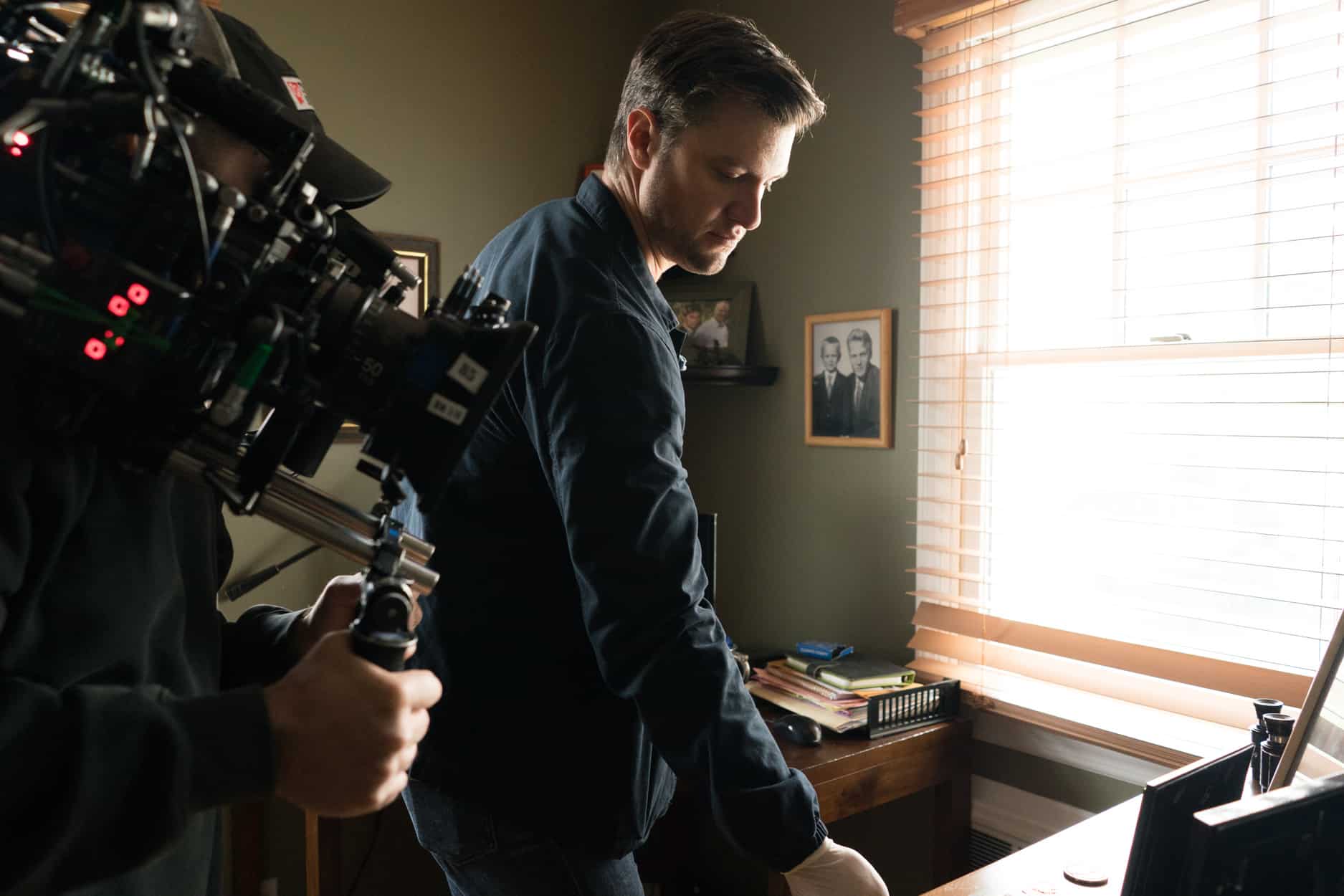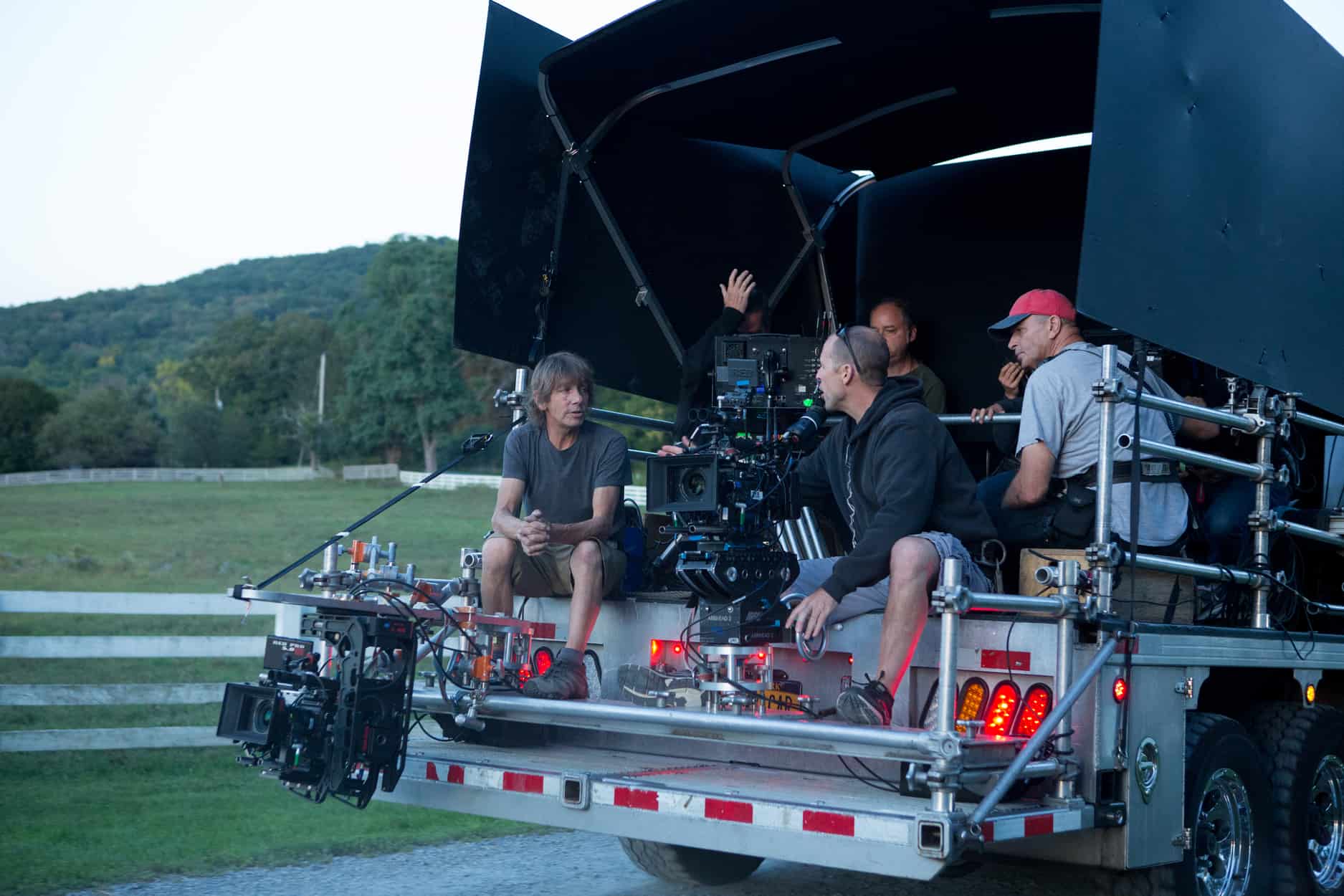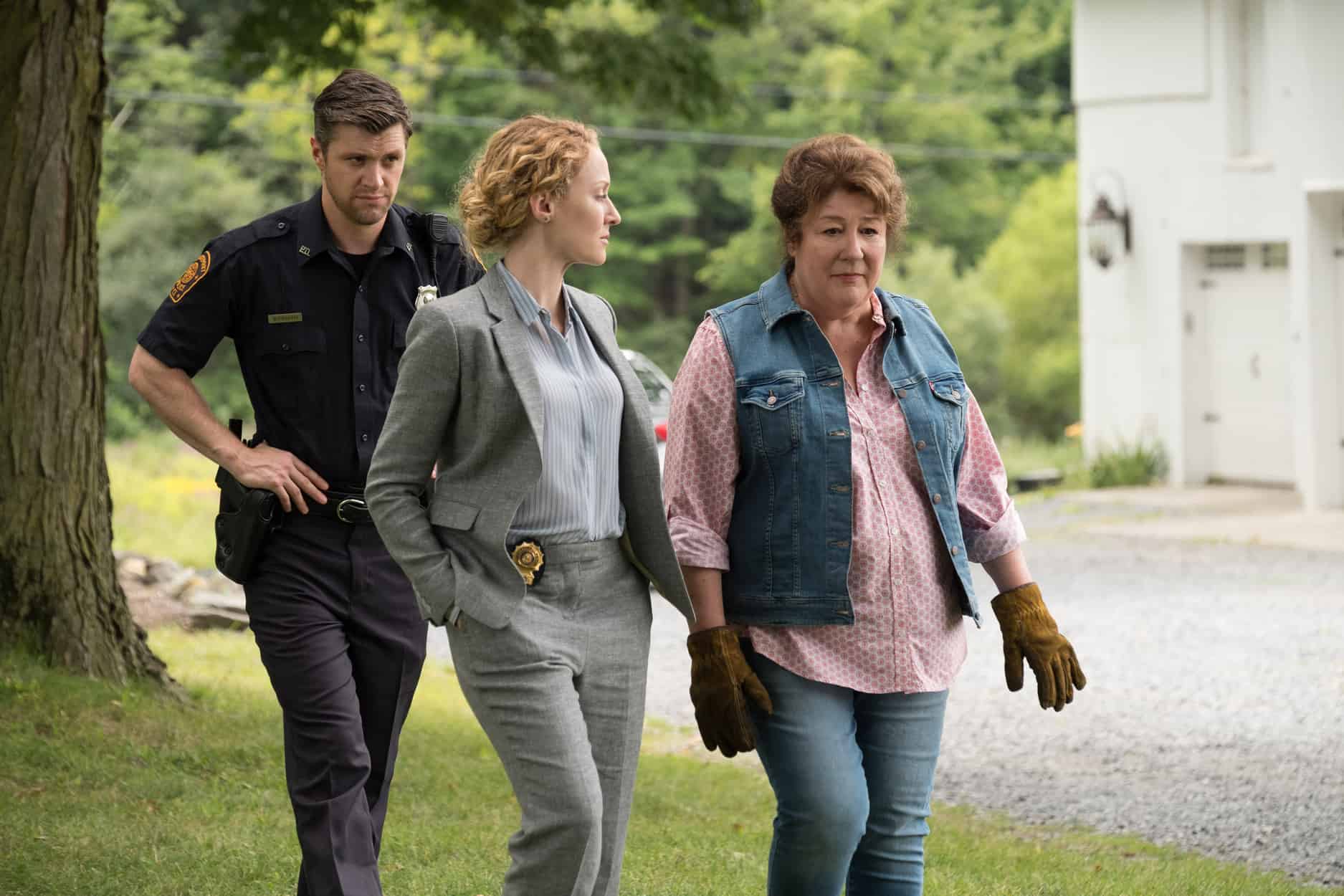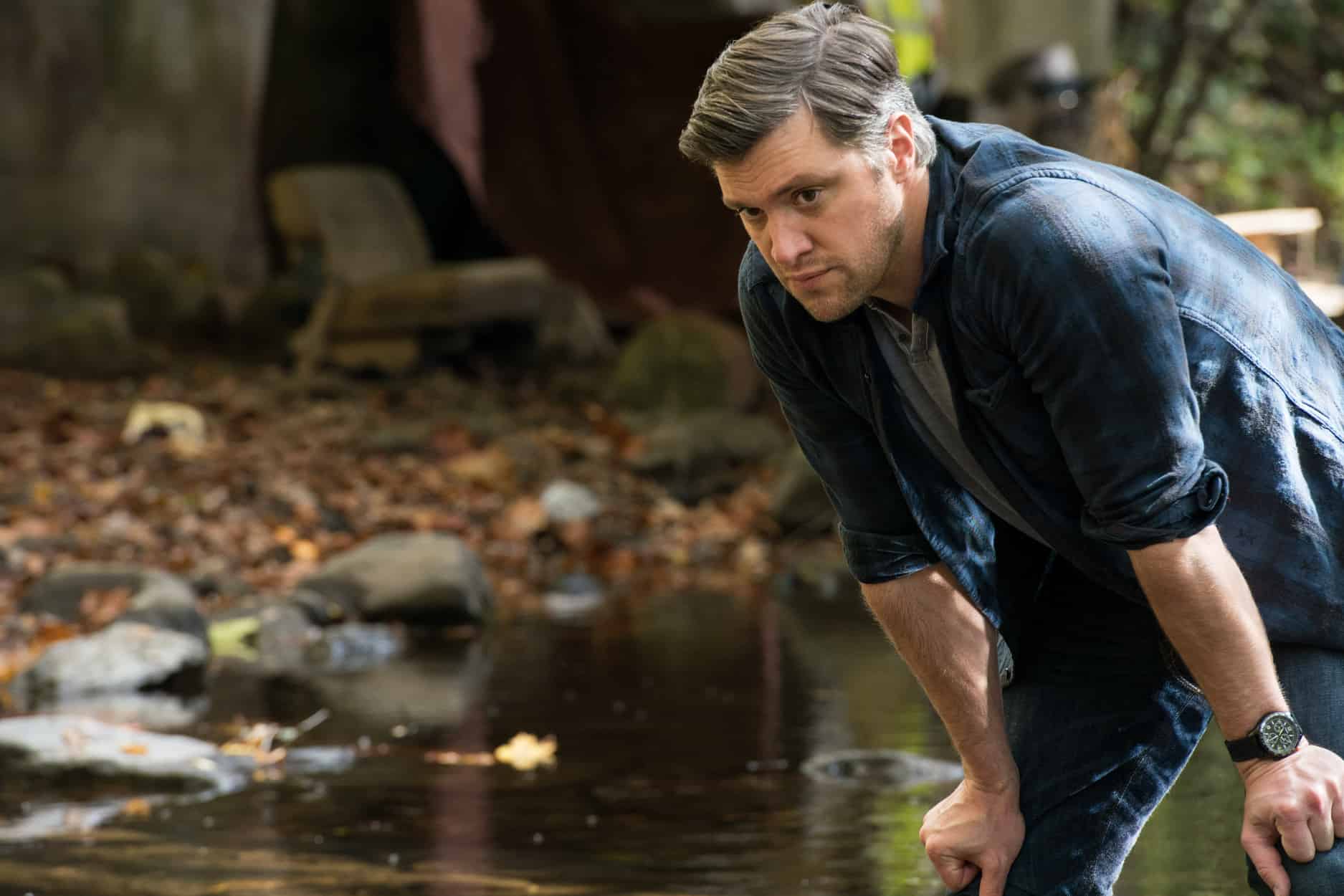Sneaky Pete
For Pete’s Sake
with Jeff Muhlstock, SOC
Sneaky Pete is an Amazon original series starring Giovanni Ribisi, about a con man newly-released from prison who hides from debtors by assuming his cellmate’s identity. Along the way, he finds himself getting deeper and deeper into a world of crime he can no longer escape. The critically-acclaimed series, co-created by Breaking Bad’s Bryan Cranston, made a unique move halfway through Season 2 when producers hired director of photography, William Rexer, to bring a new approach to shooting the show.
In this special digital feature of Camera Operator Magazine, we spoke with A camera operator, Jeff Muhlstock, SOC about the changes made during this season and the experience of capturing the dynamic drama that is Sneaky Pete.
 Photo: Myles Aronowitz
Photo: Myles Aronowitz
Camera Operator: How did you get the job of A camera operator on Sneaky Pete?
Jeff Muhlstock: It’s actually an interesting story. I came in as a day player first during Season 2, and then the director that was on that particular episode really liked me and the showrunner, who’s an old friend I’ve done a few other shows with, wanted me to come on board full time. The interesting thing is that when Will Rexer came in as DP, we both came in full time, as I’ve been Will’s main camera operator for many years; it’s been close to a 30-year working relationship. So it all happened very nicely.
Will brought a wonderful kindness and sense of collaboration to the set, Will treats everyone equally. And in his world, he likes to have essentially two A operators, so we can leapfrog. When I moved up to A operator, Todd Armitage, who was the A operator before me, stayed on as the B camera operator and it ended up being a terrific relationship. And we have a very similar eye, which really came into play to have our two frames match.
CO: Very interesting. So who else did you work closely with?
Muhlstock: I had an absolutely fantastic camera department. Caroline Ibarra was our 2nd AC and does an amazing job. To change out the DP and A camera operator mid-season has very specific challenges that made many people nervous, but our camera department couldn’t have made it smoother. They weeded out the bad and found the best as far as equipment goes. And of course I have to mention my focus puller, Doug Foote. To have a good focus puller, for me, is everything. And with Doug, I don’t have to make choices based on whether or not the shot can stay in focus. It just magically happens.
I would also be remiss not to mention my dolly grip, Keith Bunting. He is an absolutely amazing human being and we clicked immediately. A good dolly grip is someone who has a good eye, and Keith and I share many of the same sensibilities. His movements were in sync with mine right out of the gate, it was one of those things where we’d been working together for a lifetime. Keith is an unbelievable asset on this show, and I look forward to working with him again. The whole grip department is equally wonderful.
 Photo: Giovanni Rufino
Photo: Giovanni Rufino
CO: How would you describe the approach to the show in terms of the camera operating?
Muhlstock: Michael Dinner, who is the showrunner and directed a few episodes, came to Will [Rexer] and I and said, “When in doubt, you go to a close-up of Giovanni Ribisi”. The show is Sneaky Pete, it’s all about what’s in his head, and what we felt was whenever possible, whatever scene it was, we had to give honor to Giovanni’s close-up; and often that was a moving close-up. And Steadicam was the perfect interactive tool to enter into his emotional state. I was flying my Steadicam probably every single day of production, and we day-played the Movi when necessary for certain shots. So Steadicam became the language of the show. Instead of just reaching across the room with a long lens, we felt that a closer, wider angle lens felt more like you were inside of Pete’s head, and feeling his experience of what was happening in the scene. So wider lenses on Steadicam was our go-to and really became the style of the show.
CO: So what were the lenses you used to capture that feeling?
Muhlstock: That’s another interesting story. When Will came in, we switched from the Red Dragon to the Red Helium sensor, which is a wider sensor with higher resolution. And with that came a change to lenses which could both cover a larger sensor and resolve at a very high resolution, which led us to the Sigma Cine Primes.
Our standard close-up lens would be the 35mm, which on the Helium sensor translates to something like a 21mm on standard Super 35, but without the distortion and with a beautiful shallow focus falloff. Those Sigma Cine Primes were really game changing for the show, actually. The vintage Cooke Panchro and Zeiss Super Speed lenses they had been using had so many color abnormalities and other inconsistencies, having a set of perfectly matched, high-resolving lenses was important for a number of reasons. But the small size and light weight made them very Steadicam friendly. We love the Sigma’s, they flare beautifully, they’re very fast, and quite cost effective.
What’s funny is that in this digital era, DP’s are very quick to diffuse and add filtration because sensors and lenses are too crisp. But the Sigma’s have a special quality of softness to them where you don’t really need to muck them up. But I actually worked with another DP and projected them up against Master Primes and Cookes, and we were blown away.
CO: Very nice. So what was the shooting schedule like on this show?
Muhlstock: It was challenging, multiple locations, a lot of company moves, it was a 10 to 12-day schedule for the hour, which is more generous than most network shows. But we did have long days, some 12 to 14-hour days, and many overnights, often going into Saturday.
 Photo: Jessica Miglio
Photo: Jessica Miglio
CO: Any interesting techniques used to shoot Sneaky Pete worth mentioning?
Muhlstock: With the large and high resolution sensor we were shooting with, on set we’d often crop in to the image and change the effective focal length of our lenses to be anything we wanted. And the fact that we did it on set rather than in post allowed us to deliver exactly the frame we wanted. If decisions like that are made on set rather than left until post, we can make a more thoughtful composition, especially in moving shots which have come to define the approach to shooting Sneaky Pete. It’s a fun way to work, I actually love that ability to crop in on set.
CO: So what have you been up to since Sneaky Pete?
Muhlstock: Right now I’m shooting another Amazon series, The Tick, working with Will Rexer again. And we’re shooting that on the Red Monstro sensor, it’s wild.
 Photo: Myles Aronowitz
Photo: Myles Aronowitz
Tech On Set:
RED Epic Helium Cameras
Sigma Cine Prime Lenses
Steadicam
Trivia:
Sneaky Pete’s cinematographer, William Rexer, has kept the Sigma Cine Primes as his go-to lenses and is now using them on the Amazon Original Series, The Tick.
Many of the characters have the same name as members of co-creator Bryan Cranston’s family: Audrey (his mother), Otto (his grandfather) and Taylor (his daughter). Additionally, Cranston’s character, Vince, is named after Breaking Bad creator Vince Gilligan.
Ethan Embry, Giovanni Ribisi and Bryan Cranston all starred in the film That Thing You Do! (1996). Ribisi and Cranston both also appeared in Saving Private Ryan (1998).
Even though he appeared in every episode of the first season and had a substantial amount of screen time, Bryan Cranston (Vince) was credited as a guest star and was not a series regular.
The spiritual community shown in the second season was filmed in the village of Nyack, New York. Several other television shows and movies, such as Billions (2016), Rise (2018), True Story (2015), The Path (2016) and The Skeleton Twins (2014) were also filmed there. Locals became so used to film crews that they were often seen walking around in the background carrying on with their days.

